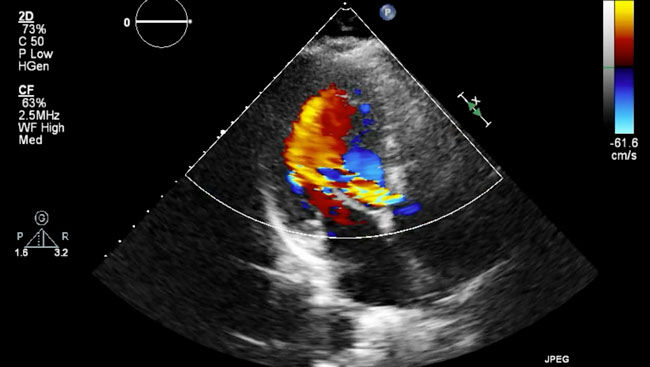Echocardiogram Criteria For Severe Aortic Valve Disease
Written By: Adam Pick, Patient Advocate, Author & Website Founder
Page Last Updated: May 11, 2025
When your doctor determines that your symptoms are indicative of mild, moderate or severe aortic stenosis, he or she will typically order an echocardiogram both to verify his diagnosis and also to determine how severe your condition is.

Quite likely, the type of echocardiogram you will have will be a transthoracic echocardiogram or a transesophageal echocardiogram (TEE). When the sonographer obtains a clear image of the aortic valve, she will take a “picture” of it so that she can measure it.
What Are The Key Criteria For Determining Aortic Stenosis?
Here are the key diagnostic criteria for measuring the severity of aortic stenosis:
- Valve Area - Once the image is still, she measures the widest portion from the inside edge of one side to the inside edge of the other side. The “area” of the valve is then determined. The area of the aortic valve is one of the factors used to determine whether or not aortic stenosis exists and if so, the severity of the stenosis.
- Aortic Velocity - A systolic pressure (the top number when you read your blood pressure) is obtained when your heart contracts and blood is thrust through the aortic valve. Aortic velocity (the speed at which the blood flows) quickly peaks during the first third of the heart contraction (systole) and then falls to your normal resting pressure during the rest of the systole.
- Mean Pressure Gradient - A mean pressure gradient (average measure of the valve’s resistance to blood flow) is also obtained during the systolic phase. Aortic velocity and mean pressure gradient are also utilized to determine the severity of your aortic stenosis.
Severity of Aortic Stenosis
A normal sized aorta has a valve area of approximately 3.0cm2 (3.0 centimeters squared) and 4.0cm2. Normal aortic velocity would be greater than 3.0m/sec (3.0 meters per second), while a normal mean pressure gradient would be from zero to 20mm Hg (20 millimeters of mercury, which is how blood pressure is measured). The following table identifies how aortic stenosis is classed:
- Severity Valve Area (cm2) Maximum Aortic Velocity (m/sec) Mean Pressure Gradient (mm Hg)
- Mild 1.5-2.0 2.5-3.0 <25
- Moderate 1.0-1.5 3.0-4.0 25-40
- Severe 0.6-1.0 >4.0 >40
- Critical <0.6
Severity of Aortic Regurgitation
To determine aortic valve regurgitation, the technician also uses Doppler technology integrated with the transducer. This gives a visual picture of the direction and speed of blood flow. When the aortic valve does not fully close, blood reverses direction and appears as a jet, or plume, on the screen. How far the jet extends also helps determine the severity of the regurgitation. Jet height is compared to the output of the left ventricle and is expressed as:
- Mild if it is less than 25%
- Moderate if it is between 26 and 46%
- Moderately severe if it is between 47 and 64%
- Severe if it is 65% or less
Monitoring Aortic Valve Disease
Future echocardiograms may be scheduled according to the severity of your condition. Mild aortic stenosis will require an echocardiogram from 3 to 5 years. If it is moderate, expect to have an echocardiogram either annually or biennially to monitor how the condition is progressing. Some severe cases will require another echocardiogram as soon as every 3 months, but generally twice per year.
Additional Resources About Aortic Stenosis
To help you learn more about aortic stenosis, here is additional information to educate and empower you:




